What is TDD or Test Driven Development?
Software are most used technical solution. And software development as we know it is complex. So, it is no secret that dedicated software developers make a lot of mistakes in the software development process.
By the time project is wrapping up, a lot of errors, bugs, and other coding issues are piled up. This makes the testing process that much more problematic.
But where there is a problem, there is a solution. This is TDD or Test Driven Development. So, what is TDD?
Well, if you want to learn what is test-driven development and more, this blog is for you. After all, with the Revenue in the Software market reaching US$593.40bn in 2022, everyone wants to level up their software development process. TDD is a good way to do so.
Enough being said, let’s get right into it, starting with:
What is TDD (Test Driven Development)?
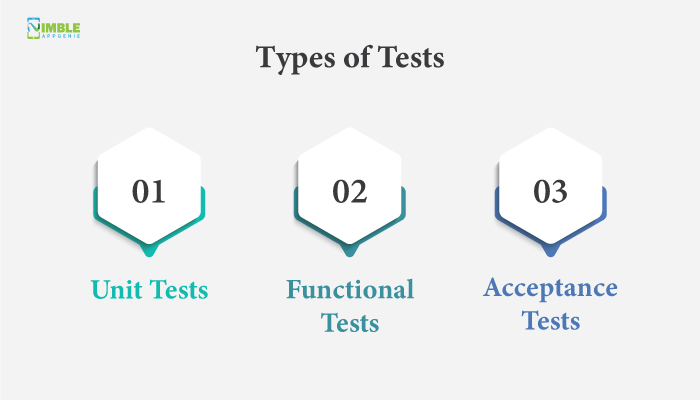
Test Driven Development is an iterative development approach. TDD uses test cases that are created for specification and validation code’s function. The test is written before creating production code.
This approach helps developers make sure the code they have written is easy to execute, simple, and error-free. In case the test is failed, the developer needs to write new code. TDD is a cycle of testing, coding, and refactoring.
As the name suggests, TDD allows the tests to drive development. And there are three different types of tests. Namely:
- Unit Tests
- Functional Tests
- Acceptance Tests
All of these tests serve different purposes. They are used to test different types of code.
TDD is something a software development company would use to make that solution that much better.
However, contrary to what a lot of people might believe from the name of the concept, it is very different in reality.
For instance, test-driven development is not about testing or design. Plus, it is important to understand that it doesn’t say “create a test, then write a code that passes the test” nor does the approach involve excessive testing.
These are some common misconceptions.
To clear out these misconceptions, we shall be going through TDD development process in the section below:
TDD Process: Test-Driven Development Implementation
When someone asks what is TDD, the most common answer is its iterative development process. In other words, it is a repetitive cycle.
This is something that is very important to understand if someone wants to implement it. As such, the cycle can be divided into three different phases.
These are namely:
Red Phase
Green Phase
Refactoring Phase
In this section, we shall be going through each of these phases as well as the steps within them. So, the process to implement test-driven approach is, as mentioned below:
Phase Red
This is the first phase. Being named red appropriately, this is where the code fails the test. There are two steps within the phase. These are described below:
1) Create A Test
To write a test, a developer must be well versed in specifications and the requirements of the said project as well as code.
Here, the developer needs to create a test for a specific feature i.e. function of the said code. This is what makes TDD stand out from traditional software development methods.
Since the code is not optimized for testing, it will fail, as we will see in the next step.
2) Run & Fail The Test
With the tests created, it’s time to run them and test the code.
The code we are working on is not optimized to stand the test. Therefore, the test failed. But don’t worry, this is going in the direction we want it to. The reason is that the fail test means the test developer created is working fine.
Now, it’s time to write better code in the next Phase.
Green Phase
The test has been created. Therefore, it’s time to optimize and write new code that will fulfill test-driven development requirements.
Let’s do it:
1) Write enough code to satisfy all tests
In the green phase, it’s time to do the work you hire dedicated developers for. in other words, it’s time to write code that fulfills test requirements.
Sometimes, the code passes the test in an undesired way. Therefore, it is recommended that the developer add statements to return a constant and add logical blocks to build the function.
In any case, when the code has been written or optimized, it’s time to test it again.
2) Run Test
When the developer runs code through a test, there are two possible scenarios.
- The code passes: in this case, the code meets all the requirements without compromising with existing features.
- The Code Fails: in this case, the code must be optimized to pass the test.
Refactoring Phase
In the last phase of TDD implementation, it’s time to refactor the code.
1) Refactor the code
As the development process proceeds, the code base will go larger. However, the developer must work to clean the code and maintain it.
Now, there are a few different practices that may be followed here. These are, as mentioned below:
- Duplication should be dealt with.
- Object definitions and names should represent purpose and usage.
- Larger functions should be split and named to improve readability and maintainability.
- In the refactoring phase, the developer should make sure the code doesn’t interfere with existing functionality
This is the full process of TDD Test Driven Development Implementation. Now, let’s look at TDD’s example to understand it better.
Test-Driven Development By Example
An example of the TDD example is, as shown below:
function validateForm(form) {
const result = {
errors: []
};
const inputs = Array.from(form.querySelectorAll(‘input’));
let isValid = true;
for (let input of inputs) {
if (input.dataset.validation === ‘alphabetical’) {
isValid = isValid && /^[a-z]+$/i.test(input.value);
} else if (input.dataset.validation === ‘numeric’) {
isValid = isValid && /^[0-9]+$/.test(input.value);
}
}
result.isValid = isValid;
return result;
}
With this out of the way, let’s look at some tools which are used to TDD development in the next section of our blog.
Popular TDD Tools
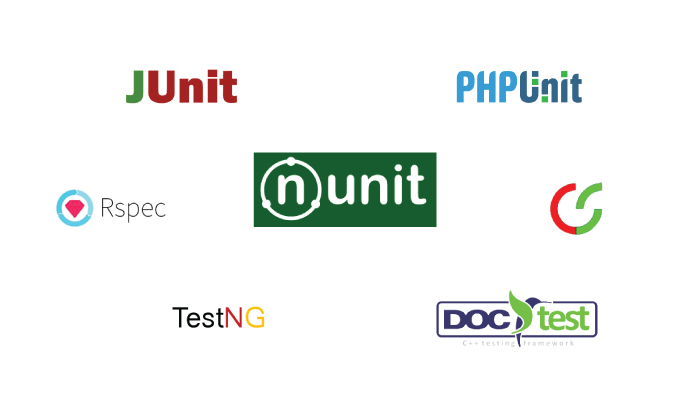
Development tools make everything that much easier. There are some popular tools that are used by developers for TDD.
These are, as mentioned below:
| csUnit | JUnit | PHPUnit | TestNG |
| DocTest | NUnit | PyUnit | RSpec |
Advantages & Disadvantages of Test Driven Approach
Test Driven Approach is used by some of the best development companies in the world including Google.
But before you use TDD to create a platform for your business, it’s a good idea to good through its pros and cons in the section below.
Let’s get right into it:
What Is TDD’s Advantage?
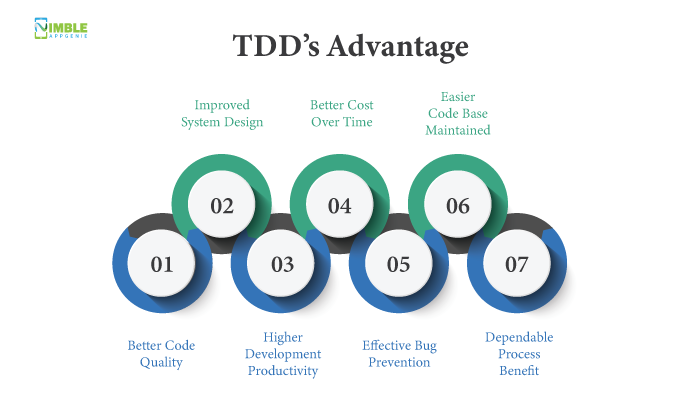
So, what is TDD’s main advantage?
Well, test-driven development comes with a range of advantages. These make it a favorable option for many development projects.
In any case, pros of the TDD are, as mentioned below:
- Better Code Quality: one of the main advantages of this approach is that it helps developers improve the quality of their code tremendously.
- Improved System Design: another advantage comes in form of improved system design.
- Higher Development Productivity: since the debugging work isn’t piled up for the end of the project, the overall productivity is higher.
- Better Cost Over Time: with better cost over time, the cost to hire software developers is also affected.
- Effective Bug Prevention: TDD approach is very effective in bug prevention in fact that’s the main focus of this approach.
- Easier Code Base Maintained: with the red-green-refactor cycle, the code maintainability is much better.
- Dependable Process Benefit: TDD is highly dependable which works as an advantage to developers as well as clients.
These are some of the advantages of this platform. And now, it’s time to look at the disadvantages.
What Are Disadvantages Of Test-Driven Approach
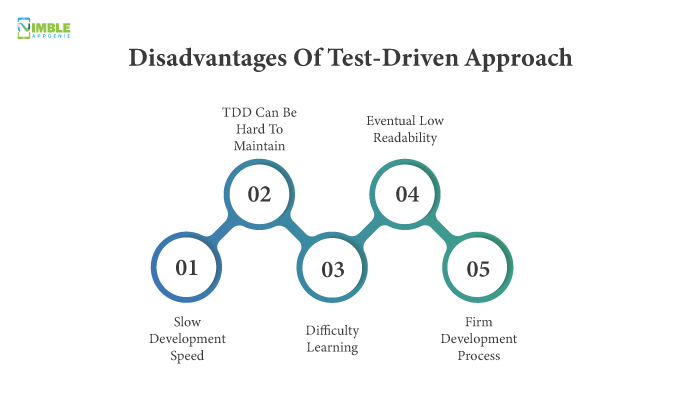
As good as TDD is, it does have its own shortcomings. These are, as mentioned below:
- Slow Development Speed: all the testing and repetitive cycle add development time to the project.
- TDD can be hard to maintain: developers often complain that TDD process can be difficult to maintain.
- Difficulty learning: TDD is no child’s play. In fact, developers need to learn it before implementation. So, what is TDD learning curve? Well, it is quite steep.
- Eventual low readability: In addition to the steep learning curve, TDD also results in code that is difficult to read.
- Firm development process: well, flexibility is a big attribute in development. TDD on the other hand makes everything rigid and firm. This comes out as a problem.
These are the advantages and disadvantages that come in play with Test driven approach.
TDD Best Practices
If you want to implement TDD, you need to do it well. So, this begs the question, what is test driven development in its ideal form?
To answer that question, we shall be going through the TDD Best Practices. Now, TDD is a huge concept, therefore, to understand the best practices better, we will be looking at different components. These are, as mentioned below:
- A road map must be devised first and it should be broken down into test cases. It’s ideal to follow the red-green approach.
- The developer may implement source code and test separately. They make two directories for implementing and testing.
- A correct structure should be followed to write the test case. The same name should be used in the test class and production/implementation class with a change in suffix.
- Developers are advised to maintain code austerity.
- Another important practice is that developers should always know when the right time to use TDD is otherwise it can increase the load on development.
TDD Vs. Traditional Testing
In more than one way, the test-driven approach is very familiar to traditional testing. As both of them finds one or more defects with successful tests.
However, what makes TDD stand out is its ability to ensure requirement fulfillment. Another major difference is that the TDD deals with Production code while the traditional one focuses on test case design.
Test Driven Approach | Traditional Testing |
| Focuses more on Production code. | Focuses more on test case design. |
| Achieve 100% test coverage | Doesn’t offer 100% coverage |
While there are certain differences, there are more similarities. As such, to make an successful app both testing methods are used.
Behavior Driven Development(BDD) VS Test driven development (TDD)
So, what is TDD, and what is BDD? What’s the difference between these two?
Well, if you want to know which one of these you should use in mobile app development services, here, both of them shall be discussed in detail. These are, as mentioned below:
Behavior Driven Development(BDD)/ Acceptance BDD
In Acceptance Test Driven Development or Behavior Driven Development(BDD), the developer will create a single Acceptance Test, as suggested by the name. The acceptance test meets specifications requirements while also fulfilling system behavior needs.
Following this, the developer needs to write production/functionality code that would satisfy the test, in order to run it.
Since the Acceptance Test is based on overall system behavior, it is often also known as BDD programming or Behavioral Driven Development. An Example of the BDD style Code is mentioned below:
public class WhenSendingInternationalFile
{
@Test
public void should_send_file_to_a_local_account() {…}
@Test
public void should_send_file_to_a_different_account() {…}
…
@Test1
public void should_recieve_file_as_a_separate_transfer() {…}
…
}
TDD driven development
TDD as we know it is a process or in a better choice of words, an approach where the developer will create a unit test. After this, they will write a code that fulfills test requirements.
It is the nature of the unit test to check the system’s functionality. Therefore, it is also known as the developer TDD.
The Main Goal of TDD tests the code of JIT bases or Just-in-time bases. This helps improve overall efficiency.
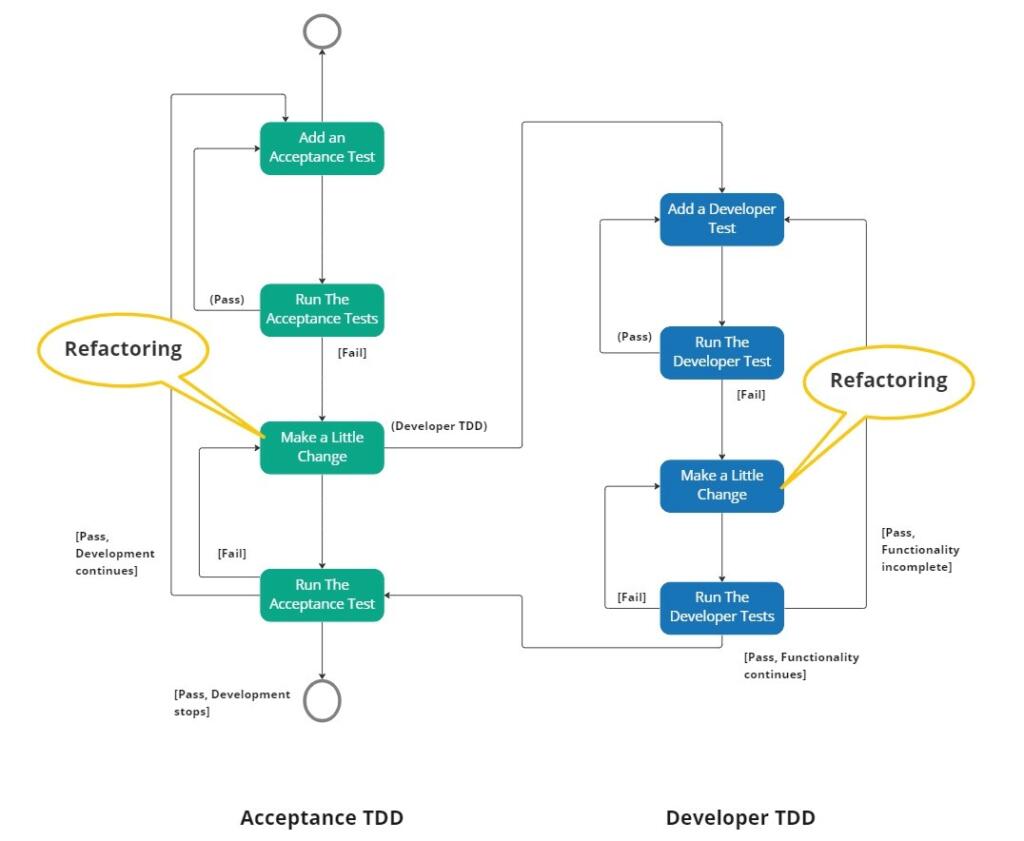

TDD vs BDD
TDD BDD seems very similar to each other. And this is because they are.
While both of the approaches are similar in working, the main difference lies in the scope. What we mean to say is:
Let’s discuss this in form of a table.
Behavior Driven Development | TDD test-driven development |
| BDD is a Team Methodology | TDD is a Development Approach |
| Developer Automate Specifications | Developer write tests |
| Based on how user want solution to behave | Based on developer’s idea of how app should work |
| BDD is a behaviour centric approach. | TDD is a low level approach. |
TDD vs BDD Summary
Both of the approaches i.e. TDD BDD are similar to each other. However, the basic differences lie in their scope. For TDD is from the developer’s perspective and the BDD is focused on the user. The former create an app on the developer’s liking while the one is all about the user.
Test-Driven Development In Agile
What is Test Driven Development in Agile?
Agile development methodology uses TDD all the time. In fact, the basic principles of Test Driven Development come from Agile and its extreme programming.
So, why do TDD and Agile so well together? Well, the answer is simple.
Agile as we know it is a form of Feedback Driven Development in layman’s terms. Therefore, it depends on feedback very much.
What is another development approach that gives rapid feedback? Well, you guessed it. It’s TDD approach.
The TDD’s fast feedbacks fulfill the needs of Agile feedback. Therefore, they both go hand in hand.
Agile Model Driven Development (AMDD)
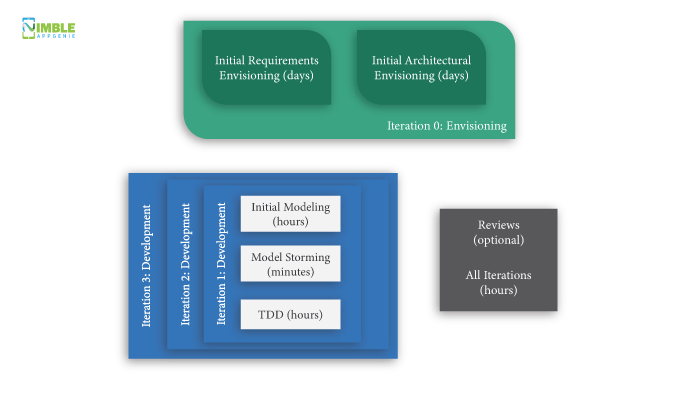

What is Agile Model Driven Development?
Well, we have discussed test driven development to the teeth. And it’s clear that this approach is very good at code validation and specification.
However, there is a big drawback that comes with TDD. With its attention to detail, test-driven approach often overlooks larger issues. This covers likes of the overall design, use of the system, or UI
So, where TDD lefts off, AMDD picks up.
In other words, while TDD looks at the smaller issues, AMDD addresses the large issues or shall we say, Agile scaling issues.
Now, let’s look at it in detail:
The lifecycle of AMDD
The lifecycle of AMDD is shown below in form of an infograph.


Test Driven Development (TDD) Vs. Agile Model Driven Development (AMDD)
So, how does Agile Model Driven Development compare to TDD Driven Development? And what is TDD approach’s position in this match?
Well, let’s look at just that and answer the question below:
TDD | AMDD |
| It reduces the programming feedback loop length
| Opposed to TDD, Agile approach works to shorten modeling feedback.
|
| This approach is all about detailed specification
| AMDD approach focuses on large program.
|
| Promotes high quality code creation.
| Allows transparency between stakeholders
|
| It is more focused on developers.
| It is more focused on Business Analyst, stakeholders, and data professionals.
|
| non-visually oriented
| AMDD visually oriented
|
Conclusion
What is TDD? It’s one of the most popular development approaches that is based on testing code on every step to reduce load at the end of the project.
Test Driven Approach offers a range of benefits that makes development that much easier and more productive. Being difficult to learn, it also comes with its own disadvantages.
Being a popular approach it goes well with agile development. However, it should not be confused with Agile model driven approach as they are two different things.
Now, if you are someone who wants to learn more about Test Driven Development (TDD), it is recommended that you contact an IT consulting firm that will be able to give you insight on the same as well as TDD in practice.


Niketan Sharma is the CTO of Nimble AppGenie, a prominent website and mobile app development company in the USA that is delivering excellence with a commitment to boosting business growth & maximizing customer satisfaction. He is a highly motivated individual who helps SMEs and startups grow in this dynamic market with the latest technology and innovation.
Table of Contents













No Comments
Comments are closed.